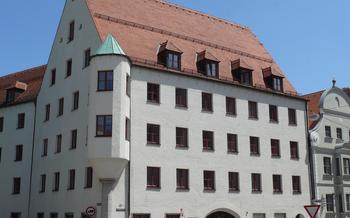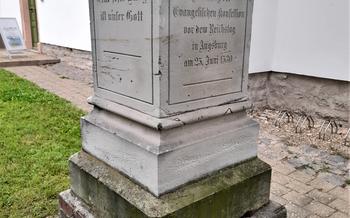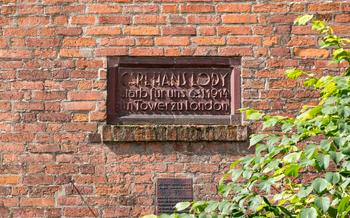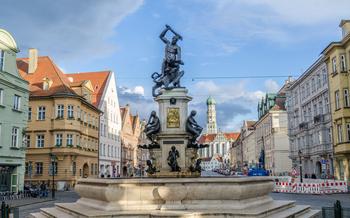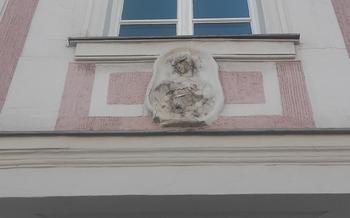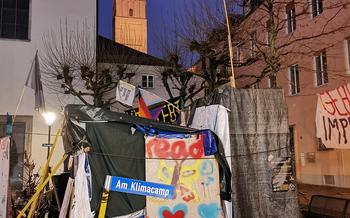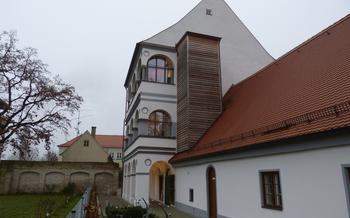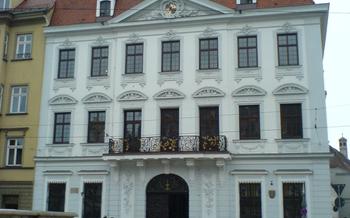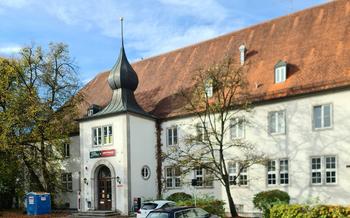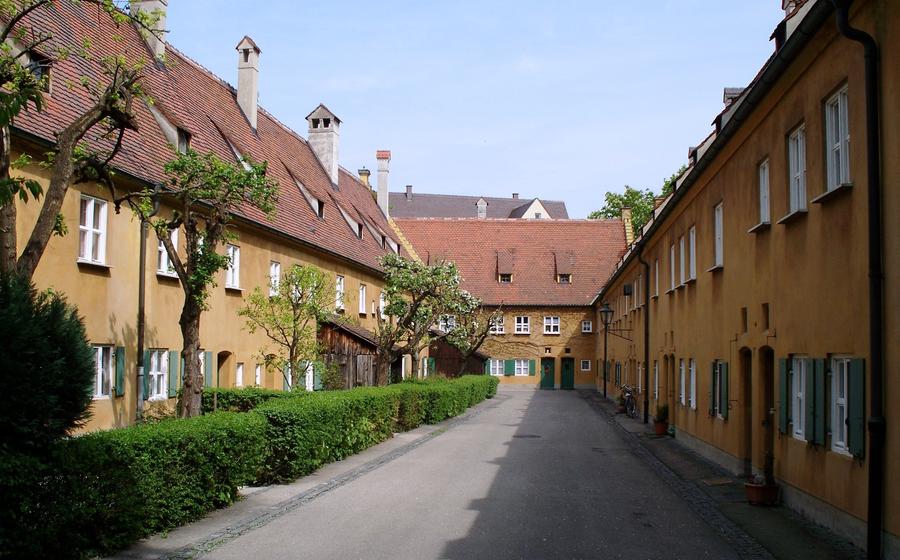
Fuggerei
- The Fuggerei: A Unique Historical Gem
- A Walk Through Time: Exploring the Fuggerei
- The Fuggerei Church: A Place of Worship and Community
- The Fuggerei Museum: Unveiling the Past
- The Fuggerei Today: A Thriving Community
- Step Back in Time: Guided Tours of the Fuggerei
- Practical Tips for Visiting the Fuggerei
- Capture the Moment: Photography in the Fuggerei
- Souvenirs and Mementos: The Fuggerei Shop
- Fuggerei Events and Festivals: A Celebration of History
- Beyond the Fuggerei: Exploring Augsburg's Treasures
- Culinary Journey: Dining Options Near the Fuggerei
- Accommodations for a Memorable Stay in Augsburg
- Immerse Yourself in History: Books and Films About the Fuggerei
- Insider Tip: Unveiling a Hidden Gem
The Fuggerei: A Unique Historical Gem
Nestled in the heart of Augsburg, Germany, lies the Fuggerei, the world's oldest social housing complex still in existence. Founded in 1521 by Jakob Fugger the Elder, a wealthy merchant and philanthropist, the Fuggerei stands as a remarkable testament to his vision of creating a sustainable and supportive community for the city's less fortunate residents. This unique historical gem has survived wars, economic hardships, and the passage of time, retaining its original charm and purpose.
Historical Significance
The Fuggerei holds immense historical significance as the oldest surviving social housing project in the world. Its foundation in the 16th century marked a revolutionary approach to addressing poverty and social welfare, setting an example for similar initiatives throughout history. The complex has stood steadfast through centuries of change, serving as a refuge for the needy and demonstrating the enduring legacy of Jakob Fugger's philanthropic spirit.
Architectural Features
The Fuggerei's architectural design reflects the Renaissance style prevalent during its construction. The complex comprises 67 houses arranged in neat rows, forming a self-contained neighborhood within the city walls. Each house features two stories, with a living room, kitchen, and bedroom on the ground floor and a loft for additional sleeping space. The courtyards between the houses provide communal areas for residents to socialize and engage in various activities.
Social and Economic Importance
The Fuggerei played a crucial role in providing affordable housing and fostering a sense of community among Augsburg's working class. Residents were required to pay a nominal rent and attend daily mass, ensuring their spiritual well-being alongside their material needs. The complex also included a church, a school, and a bakery, creating a self-sufficient microcosm within the larger city.
A Walk Through Time: Exploring the Fuggerei
The Fuggerei is a fascinating labyrinth of narrow cobbled streets, lined with rows of identical, pastel-colored houses. Each house consists of two small rooms, a kitchen, and a cellar, providing a glimpse into the simple yet dignified living conditions of the Fugger tenants. The courtyards, adorned with lush greenery and a central well, create a sense of communal living and foster a strong sense of community among the residents.
One of the most striking features of the Fuggerei is its historical landmarks and monuments. The centerpiece of the settlement is the Fuggerei Church, a beautiful example of Renaissance architecture with intricate stained-glass windows and a stunning altarpiece. Other notable landmarks include the Fuggerei Museum, which houses exhibits on the history and life of the Fugger family and the Fuggerei residents, and the impressive Fuggerhaus, the former residence of the Fugger family, which now serves as a cultural center and event venue.
The Fuggerei Church: A Place of Worship and Community
At the heart of the Fuggerei stands the Fuggerei Church, a magnificent edifice that serves as a spiritual and social hub for the community. Constructed in the early 16th century, the church showcases a blend of Gothic and Renaissance architectural styles, reflecting the transition between two significant eras in European history.
The church's exterior boasts intricate stone carvings, delicate tracery windows, and a striking bell tower that reaches towards the sky. Inside, visitors are greeted by a serene and awe-inspiring atmosphere. The vaulted ceilings, adorned with intricate frescoes, create a sense of grandeur and devotion.
The Fuggerei Church is not just a place of worship but also a testament to the community's strong sense of unity and solidarity. Throughout history, the church has been a gathering place for residents to celebrate religious festivals, mark important milestones, and seek solace in times of need.
Beyond its religious significance, the Fuggerei Church also holds immense historical value. It houses several notable works of art, including a beautiful altarpiece depicting the life of Jesus Christ. The church's interior is adorned with intricate carvings, sculptures, and stained-glass windows, each telling a unique story from the Fuggerei's past.
The Fuggerei Museum: Unveiling the Past
Nestled within the heart of the Fuggerei, the Fuggerei Museum serves as a time capsule, inviting visitors to delve into the rich history and legacy of this extraordinary enclave. Through a captivating array of exhibits and interactive displays, the museum narrates the compelling story of the Fuggerei's founding, its evolution over the centuries, and the lives of its past and present residents.
Exhibits within the museum showcase a treasure-trove of artifacts, documents, and personal belongings that provide a glimpse into the daily lives, customs, and traditions of the Fuggerei community. Visitors can admire intricate wood carvings, handcrafted tools, and domestic objects that reveal the ingenuity and craftsmanship of the Fuggerei's inhabitants.
The museum also features a multimedia presentation that brings to life the captivating tales of the Fuggerei's founders, the Fugger family, and the challenges and triumphs they faced in creating and sustaining this unique community. Interactive touchscreens allow visitors to explore historical maps, view archival photographs, and engage with interactive displays that provide a deeper understanding of the Fuggerei's social and economic significance.
A visit to the Fuggerei Museum is an essential experience for anyone seeking to unravel the captivating story of this enduring social experiment. It offers a profound insight into the lives of the Fuggerei's residents, their struggles, their achievements, and the enduring legacy they have left behind.
The Fuggerei Today: A Thriving Community
The Fuggerei has evolved into a vibrant community that honors its historical roots while embracing modern-day living. Its current residents, known as Fugger tenants, are carefully selected based on their financial need and commitment to community values. They pay a symbolic annual rent of just one Rhenish guilder, a tradition that has remained unchanged since the Fuggerei's inception.
The community fosters a strong sense of togetherness, with residents actively participating in social and cultural events. These events include traditional Bavarian festivals, communal dinners, and craft workshops, which provide opportunities for residents to connect and celebrate their shared heritage.
Preservation and maintenance efforts are meticulously carried out to uphold the Fuggerei's historical integrity while ensuring the well-being of its residents. The Fuggerei Foundation, established in 1521, plays a crucial role in preserving the site's architectural heritage and supporting the community's needs. Through ongoing restoration projects and initiatives, the foundation ensures that the Fuggerei continues to thrive as a living testament to its founder's vision.
Step Back in Time: Guided Tours of the Fuggerei
Enhance your visit to the Fuggerei with a guided tour, led by knowledgeable and passionate local experts. These tours offer an immersive experience, providing insights into the history, architecture, and unique social fabric of this extraordinary community.
Guided tours of the Fuggerei are available in various languages, including English, German, Spanish, and Italian. Tours typically last for around 45 minutes to an hour, allowing ample time to explore the main highlights of the Fuggerei, including its charming streets, historical landmarks, and the Fuggerei Church.
The cost of guided tours varies depending on the language and group size, but generally ranges from 5 to 10 euros per person. Tours can be booked in advance online or directly at the Fuggerei visitor center. It's advisable to book in advance, especially during peak tourist season, to secure your spot.
Whether you're a history buff, an architecture enthusiast, or simply curious about this unique community, a guided tour of the Fuggerei is an excellent way to delve deeper into its fascinating story and uncover its hidden secrets.
Practical Tips for Visiting the Fuggerei
Opening Hours and Admission Fees:
- The Fuggerei is open to visitors daily from 8:00 AM to 5:00 PM, except on public holidays.
- Admission to the Fuggerei is free of charge, allowing everyone to experience this historical gem.
Accessibility Information:
- The Fuggerei is wheelchair accessible, with ramps and cobblestone-free paths throughout the premises.
- Visitors with disabilities can request assistance from the friendly staff at the information center.
Recommended Time for a Visit:
- To fully appreciate the beauty and history of the Fuggerei, plan to spend at least one hour exploring the streets, courtyards, and landmarks.
- Guided tours typically last around 45 minutes, providing an in-depth look into the Fuggerei's fascinating past.
Capture the Moment: Photography in the Fuggerei
The Fuggerei is a photographer's paradise, with its charming streets, picturesque courtyards, and historical landmarks. Visitors are welcome to capture the essence of this unique enclave through photography, but a few guidelines help ensure a respectful and enjoyable experience for all.
Photography Guidelines:
-
Respect Privacy: Be mindful of the residents' privacy when taking photos. Avoid photographing people closeup without their consent.
-
Stay in Designated Areas: Refrain from entering private gardens or courtyards without permission. Stick to the designated walkways and public areas.
-
Use Discretion: While photography is allowed, be considerate of other visitors and avoid blocking their views or creating disturbances.
Best Spots for Capturing the Essence of the Fuggerei:
-
Streets and Courtyards: Capture the charm of the Fuggerei's narrow cobblestone streets and serene courtyards, lined with colorful houses and historical landmarks.
-
Historical Landmarks: Don't miss the opportunity to photograph the Fuggerei Church, the oldest social housing complex in the world, and other notable landmarks.
-
People and Activities: Photograph the people who live and work in the Fuggerei, capturing their daily lives and activities. This adds a human touch to your photos.
Tips for Taking Memorable Photos:
-
Use Natural Light: The best time to photograph the Fuggerei is during the day, when natural light illuminates the buildings and streets.
-
Experiment with Angles: Don't just shoot everything straight on. Try different angles and perspectives to create more dynamic and interesting compositions.
-
Pay Attention to Details: Look for small details that can add character to your photos, such as intricate carvings, colorful flowers, or unique architectural features.
Souvenirs and Mementos: The Fuggerei Shop
As you wander through the charming streets of the Fuggerei, don't miss the opportunity to visit the Fuggerei Shop, located at the heart of this historical enclave. This quaint shop offers a delightful array of souvenirs and mementos that will serve as lasting reminders of your visit to this unique community.
Step inside and browse the shelves adorned with an assortment of handcrafted items, each imbued with the spirit of the Fuggerei. Discover intricate wooden carvings, delicate porcelain figurines, and colorful textiles that showcase the artistry and craftsmanship of the local artisans.
For those seeking a tangible piece of history, the Fuggerei Shop offers a selection of antique coins, stamps, and medals that have played a role in the Fuggerei's rich past. These rare collectibles provide a glimpse into the economic and social dynamics that shaped this remarkable community over the centuries.
The proceeds from the Fuggerei Shop directly support the preservation and maintenance of this historical gem, ensuring that future generations can continue to appreciate its unique legacy. By purchasing a souvenir from the shop, you become a part of this ongoing story, contributing to the vitality and sustainability of the Fuggerei.
So, as you depart from this enchanting enclave, take a moment to visit the Fuggerei Shop and select a memento that will forever remind you of your journey through history.
Fuggerei Events and Festivals: A Celebration of History
The Fuggerei comes alive during its annual events and festivals, offering visitors a chance to immerse themselves in the rich history and vibrant culture of this unique community. The most notable event is the Fuggerei Summer Festival, held every July, which features traditional Bavarian music, dancing, food, and family-friendly activities. Another highlight is the Fuggerei Christmas Market, held in December, where visitors can browse stalls selling handcrafted gifts, ornaments, and festive treats. Throughout the year, the Fuggerei also hosts cultural performances, workshops, and guided tours that delve deeper into the community's history and traditions. These events provide an opportunity for visitors to connect with the local community, learn about the Fuggerei's past, and celebrate its ongoing legacy.
Beyond the Fuggerei: Exploring Augsburg's Treasures
Augsburg, a city steeped in history and culture, offers a wealth of attractions beyond the Fuggerei. Take a leisurely stroll through the picturesque Old Town, a UNESCO World Heritage Site, and admire its well-preserved Renaissance and Baroque architecture. Don't miss the stunning Augsburg Cathedral, a masterpiece of Gothic architecture, with its soaring spires and intricate stained-glass windows. Immerse yourself in art at the Maximilian Museum, showcasing a diverse collection of paintings, sculptures, and decorative arts. For a unique perspective, embark on a boat tour along the picturesque canals, offering breathtaking views of the city's landmarks. Augsburg's vibrant theater and music scene offers a variety of performances, from classical concerts to contemporary plays, ensuring a memorable evening. Whether you're interested in history, art, or culture, Augsburg has something to offer every traveler.
Culinary Journey: Dining Options Near the Fuggerei
A visit to the Fuggerei is not complete without indulging in the culinary delights that Augsburg has to offer. The area surrounding the Fuggerei is home to a variety of restaurants and cafes, each offering a unique ambiance and menu.
For a taste of traditional Bavarian cuisine, head to one of the many beer halls or gaststätten in the city center. These establishments serve hearty dishes such as pork knuckle, sausages, and dumplings, accompanied by freshly brewed beer.
If you prefer a more contemporary dining experience, Augsburg also boasts a number of stylish restaurants and cafes. These venues offer a range of international cuisines, from Italian and French to Asian and American.
No matter what your taste, you are sure to find something to satisfy your palate in Augsburg. Here are a few recommended restaurants and cafes near the Fuggerei:
- Augustiner am Dom: This traditional Bavarian restaurant is located just a short walk from the Fuggerei. It offers a wide variety of classic dishes, including pork knuckle, sausages, and dumplings.
- Café am Dom: This charming cafe is located in the heart of the city center. It offers a variety of light meals, snacks, and desserts, as well as a selection of coffee and tea.
- Gasthof zum Goldenen Stern: This historic restaurant is located in a 16th-century building. It offers a menu of traditional Bavarian dishes, as well as a selection of international cuisine.
Whether you are looking for a hearty meal or a light snack, you are sure to find something to your taste in Augsburg. So, take a break from your exploration of the Fuggerei and indulge in the culinary delights that the city has to offer.
Accommodations for a Memorable Stay in Augsburg
When planning your visit to the Fuggerei, consider immersing yourself fully in the city's charm by staying in one of the many hotels near the historical enclave. These accommodations offer a range of options to suit every traveler's needs and preferences.
For a truly authentic experience, choose a hotel within walking distance of the Fuggerei. This will allow you to easily explore the neighborhood's cobbled streets, admire the well-preserved architecture, and soak up the unique atmosphere. Many of these hotels are housed in historic buildings, providing a glimpse into Augsburg's rich past.
Look for hotels that offer amenities and services tailored to the needs of travelers. This may include multilingual staff, concierge services, and tour assistance. Some hotels may also offer special packages or discounts for guests interested in exploring the Fuggerei and other attractions in Augsburg.
To create a truly memorable travel experience, consider staying in a hotel that reflects the city's cultural heritage. Many hotels in Augsburg feature traditional Bavarian décor, offering a charming and immersive environment. You can also find hotels that incorporate modern amenities while still maintaining a sense of history and authenticity.
Whether you prefer a cozy bed and breakfast, a boutique hotel with personalized service, or a luxurious establishment with all the modern conveniences, Augsburg has a wide range of accommodations to suit your needs. Choose the perfect hotel to complement your visit to the Fuggerei and make your stay in Augsburg truly unforgettable.
Immerse Yourself in History: Books and Films About the Fuggerei
To delve deeper into the fascinating history and stories of the Fuggerei, consider exploring the rich selection of books and films available. The Fuggerei Museum offers a range of publications, including historical accounts, biographies, and architectural guides. For a comprehensive overview of the Fuggerei's significance, "The Fuggerei: A Social History of a Renaissance City" by Steven Ozment provides insightful analysis and historical context. Another recommended read is "The Fuggers: The First Dynasty of Big Business" by Edwin S. Trevor-Roper, which offers a broader perspective on the Fugger family's rise to prominence.
For a visual journey through time, several films and documentaries offer captivating insights into the Fuggerei's past. "The Fugger Family: A Dynasty of Power and Wealth" is a compelling documentary that delves into the family's influence and legacy. "The Fuggerei: A Unique Social Experiment" provides a comprehensive overview of the Fuggerei's history and its enduring impact on the city of Augsburg. These books and films offer a wealth of knowledge and entertainment, allowing visitors to further explore the Fuggerei's captivating story.
Insider Tip: Unveiling a Hidden Gem
Beyond the main attractions of the Fuggerei, there are hidden gems waiting to be discovered. One such gem is the "Secret Garden", tucked away between the houses. This tranquil oasis offers a serene escape from the bustling city, where visitors can relax and enjoy the beauty of nature.
Another hidden treasure is the "Fuggerei Archives", which houses a wealth of historical documents and artifacts related to the foundation and history of the Fuggerei. Visitors can delve into the past and learn more about the lives of the Fugger family and the community they created.
For those interested in exploring the Fuggerei off the beaten path, there are several lesser-known streets and courtyards that offer a glimpse into the daily life of the residents. Visitors can wander through these hidden corners and discover charming details such as intricate carvings, colorful facades, and historical inscriptions that bring the past to life.
Unveiling these hidden gems enhances the experience of visiting the Fuggerei, allowing visitors to immerse themselves fully in its rich history and cultural significance.
